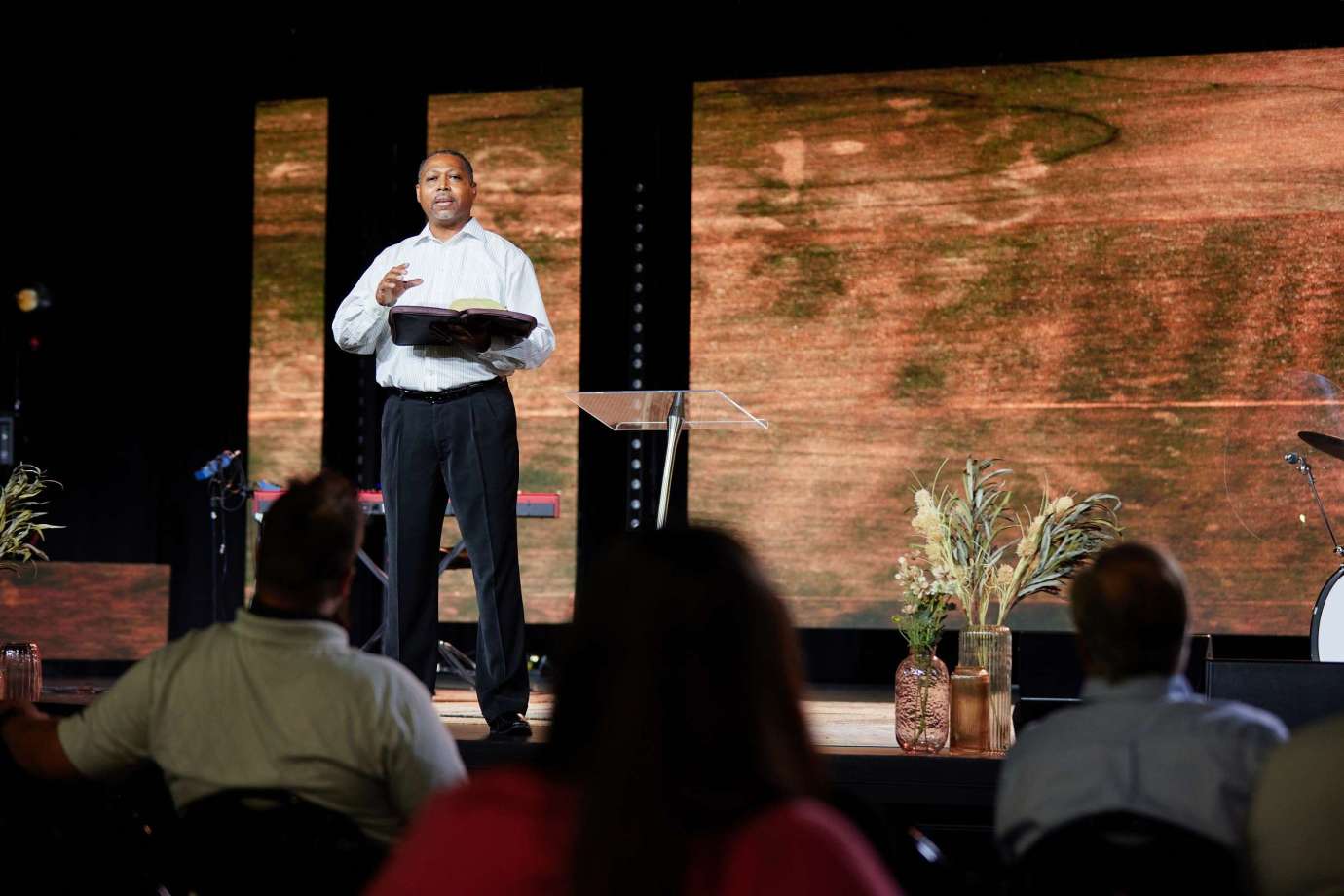RLGN 360 Practical Teaching of Scripture
Course Description
A study of the basic principles and methods of teaching and learning as they apply to the communication of the Scriptures across various age groups. The student will combine scholarly research, proper Bible study, and suitable theological formation in order to successfully teach a passage of Scripture. Additionally, the student will engage in the process of evaluation in order to determine the strengths and weaknesses of their teaching.
For information regarding prerequisites for this course, please refer to the Academic Course Catalog.
Course Guide
View this course’s outcomes, policies, schedule, and more.*
*The information contained in our Course Guides is provided as a sample. Specific course curriculum and requirements for each course are provided by individual instructors each semester. Students should not use Course Guides to find and complete assignments, class prerequisites, or order books.
Rationale
This course will provide the student with a practical procedure for constructing Bible lessons. It will enable the student to prepare a sound lesson that is supported with Scripture and an effective, well-organized outline. Thus, the student will be able to present God’s Word with meaning and applicable purpose.
Course Assignment
Textbook Readings and Lecture Presentations
No details available.
Course Requirements Checklist
After reading the Course Syllabus and Student Expectations, the student will complete the related checklist found in the Course Overview.
Discussions (3)
Discussions are collaborative learning experiences. Therefore, the student is required to create a thread in response to the provided prompt for each discussion. The thread must be at least 300 words and demonstrate course-related knowledge. In addition to the thread, the student is required to reply to 2 other classmates’ threads. Each reply must be at least 150 words. All discussions need to be supported using the Bible, Bible study resources, the course textbook, and relevant personal experience. Discussions that use the Coley text must cite at least 2 direct quotes from that text in the thread. (CLOs: A, C)
Peer-Review Discussion: Collaborative Learning
Discussions are collaborative learning experiences. Therefore, the student will complete one Peer-Review Discussions in this course. This Peer-Review Discussion provides an opportunity for a collaborative learning experience. The student will receive many benefits by completing this assignment, as collaborative learning provides an opportunity for students to share insights about each other’s work to note strengths and weaknesses. The student will post a thread of at least 300 words. The student must then post a minimum of 2 replies of at least 150 words. (CLOs: A, C)
SCORRE Teaching Method: Guided Subject/Central Theme Assignment
The student will use Mark (Teach the Text Commentary Series), and a provided template to identify a subject and central theme for a specific passage as chosen by the faculty. (CLO: D)
SCORRE Teaching Method: Guided Objective/Rationale Assignment
The student will use Mark (Teach the Text Commentary Series), and a provided template to establish an objective statement (proposition and response), a key word, rationale statements, resources, and an evaluation for a specific passage as chosen by the faculty. (CLO: C, D)
SCORRE Teaching Method: Guided Outline Assignment
The student will use Mark (Teach the Text Commentary Series), and a provided template to produce a full SCORRE outline for a specific passage as chosen by the faculty. (CLO: D)
SCORRE Teaching Method: Independent Outline Assignment
The student will use Mark (Teach the Text Commentary Series), and a provided template to produce a full SCORRE outline for 3 student choice passages. (CLO: D)
SCORRE Teaching Method: Final Presentation Assignment
The student will select 1 of his/her 3 lessons and complete the necessary components of the teaching project, which consists of the SCORRE Teaching Method: Independent Objective/Rationale Assignment for the selected lesson, the SCORRE Teaching Method: Independent Outline Assignment for the selected lesson, and a presentation document of his/her choosing. (CLOs: B, C, D)
Quizzes (2)
Each quiz will cover the Learn material for the Module: Week in which it is assigned. Each quiz will be open-book/open-notes, contain 25 multiple-choice and true/false questions, and have a 40-minute time limit. (CLO: A)

Have questions about this course or a program?
Speak to one of our admissions specialists.
Inner Navigation
Have questions?
